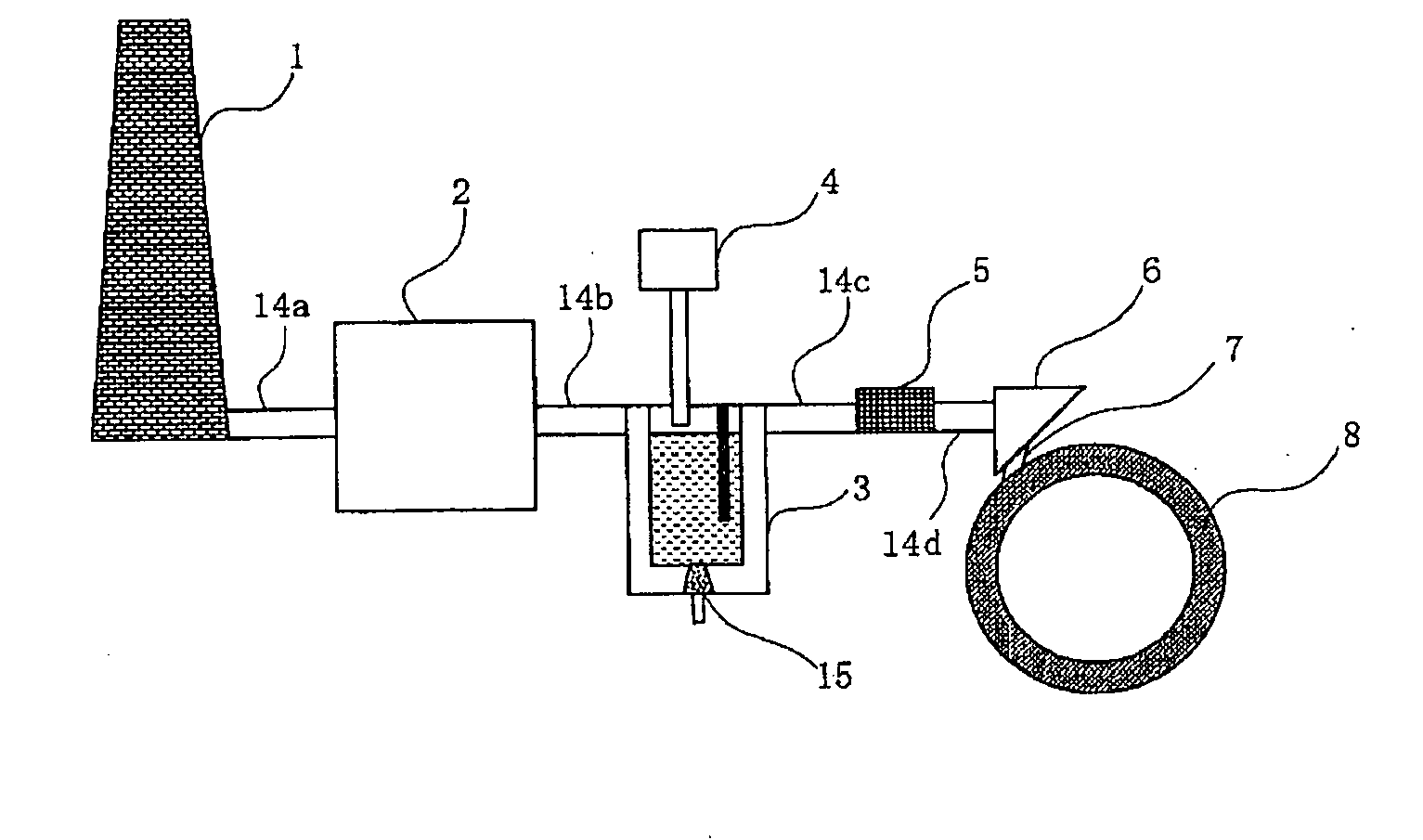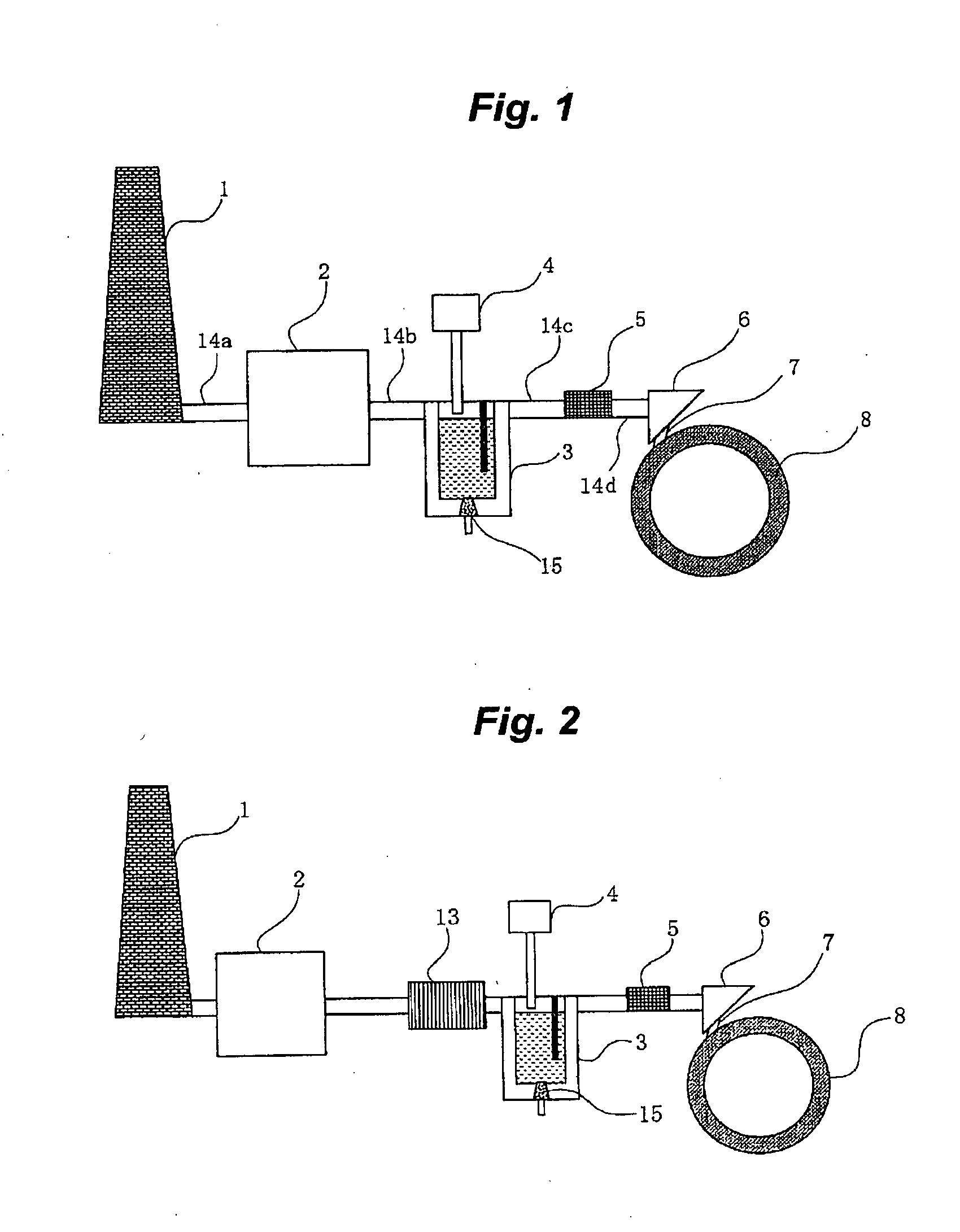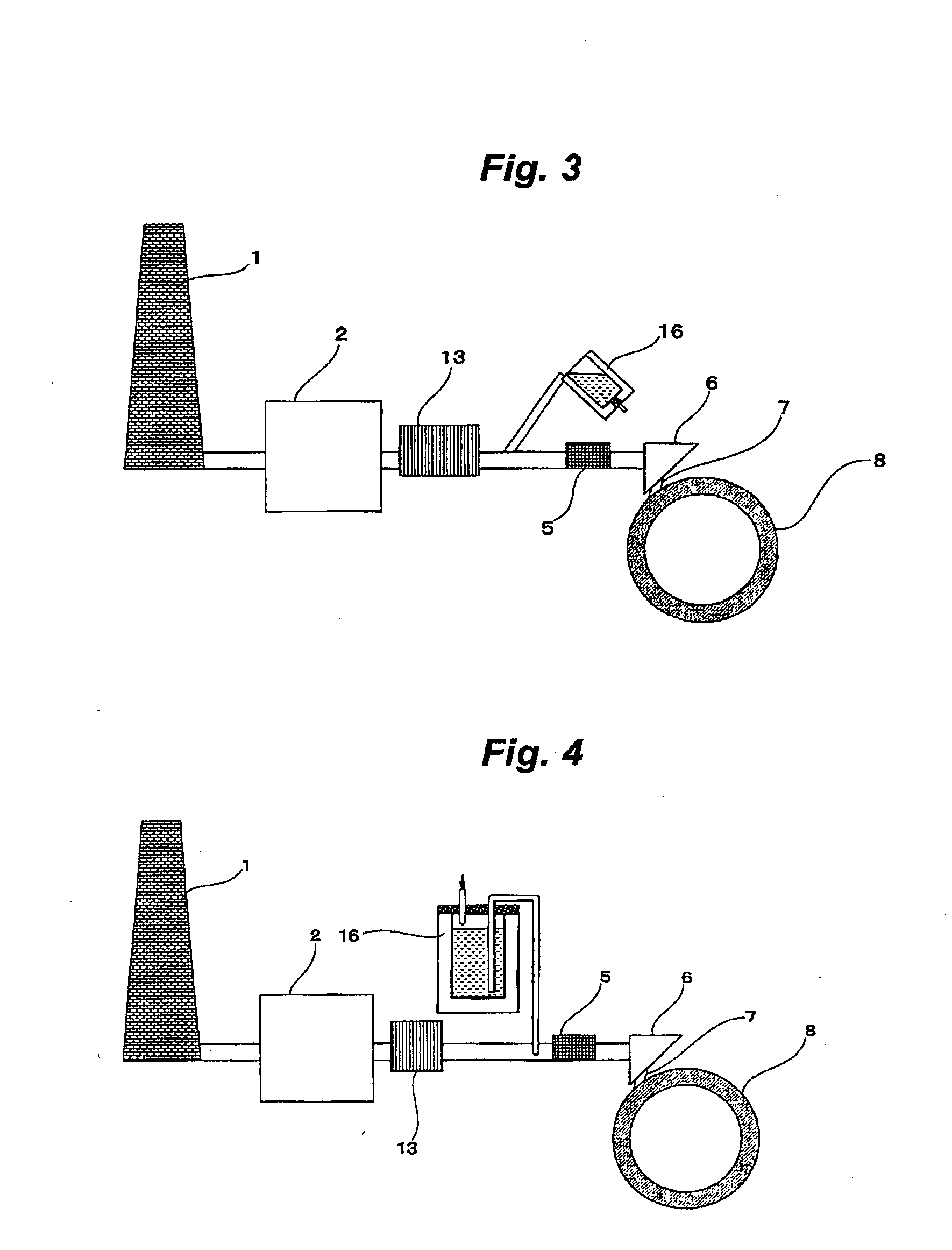Method of producing a copper alloy wire rod and copper alloy wire rod
a technology of copper alloy wire and wire rod, which is applied in the direction of manufacturing tools, furnaces, heat treatment equipment, etc., can solve the problems of significant obstructed productivity, cracking of ingots upon solidification, and lowering production costs. , to achieve the effect of improving processability, lowering production costs, and excellent properties
- Summary
- Abstract
- Description
- Claims
- Application Information
AI Technical Summary
Benefits of technology
Problems solved by technology
Method used
Image
Examples
example 1
[0098]Copper alloy wire rods having listed wire diameters were produced, by using copper alloys having an alloy composition as shown in Table 1 and using a variety of continuous casting and rolling apparatuses as shown in Table 1. The copper alloy wire rods produced by the method of the present invention are shown in Nos. 1 to 16. Some of the wire rods having the same compositions (Nos. corresponding to are shown in ( )) as those of Nos. 1 to 16 but obtained at different quenching temperature, are shown in Nos. 17 to 23 as comparative examples.
[0099]The electric conductivity of the solution-treated state was measured by measuring electric conductivity of one, which is obtained by quickly cooling in water after maintaining at a temperature of {(solidus temperature)−10° C.} for 1 hour, through a four-prove method. The electric conductivity of the copper alloy wire rod was measured by measuring the electric conductivity of each of the obtained copper alloy wire rods through the four-pr...
example 2
[0103]Hereinbelow, other examples are described in the same way as Example 1. Copper alloy wire rods having listed wire diameters were produced, by using copper alloys having an alloy composition as shown in Table 2 and using a variety of continuous casting and rolling apparatuses as shown in Table 2. The copper alloy wire rods produced by the method of the present invention are shown in Nos. 24 to 35. Further, the wire rods having the same compositions as those of Nos. 24, 29, and 30 but obtained at different quenching temperature, are shown in Nos. 36 to 38, respectively, as comparative examples.
[0104]Herein, the solution-treated rate, casting machine, rolling mill are listed in Table 2 in the same manner as in Example 1.
TABLE 2Solution-CastingDiameterQuenchingtreatedrateRollingof wire rodtemperaturerateNo.Alloy compositionCastor(ton / hr)mill(mm)(° C.)(%)24Cu—0.8Ni—0.4Co—0.3SiSCR52-way66208525Cu—1.8Ni—0.5Co—0.6SiSCR52-way66408726Cu—3.4Ni—1.4Co—1.3SiContirod202-way87909427Cu—1.5Co—0...
example 3
[0107]In the same manner as in Example 1, copper alloy wire rods having listed wire diameters were produced, by using copper alloys having an alloy composition as shown in Table 3 and using the continuous casting and rolling apparatus as shown in Table 3. The copper alloy wire rods produced by the method of the present invention are shown in Nos. 39 to 48. Further, the wire rods having the same compositions as those of Nos. 39, 42, and 43 but obtained at different quenching temperature, are shown in Nos. 49 to 51, respectively, as comparative examples.
[0108]Herein, the solution-treated rate, casting machine, rolling mill are listed in the table in the same manner as in Example 1.
TABLE 3Solution-CastingDiameterQuenchingtreatedrateRollingof wire rodtemperaturerateNo.Alloy compositionCastor(ton / hr)mill(mm)(° C.)(%)39Cu—0.6Ni—0.5SnSCR52-way67409140Cu—1.4Ni—0.7SnSCR52-way67609241Cu—4.5Ni—2.3SnSCR52-way66508842Cu—8.3Ni—2.2Sn—0.12Mg—0.24MnSCR52-way66208743Cu—9.1Ni—3.4Sn—1.0ZnSCR52-way67209...
PUM
| Property | Measurement | Unit |
|---|---|---|
| temperature | aaaaa | aaaaa |
| temperature | aaaaa | aaaaa |
| temperature | aaaaa | aaaaa |
Abstract
Description
Claims
Application Information
 Login to View More
Login to View More - R&D
- Intellectual Property
- Life Sciences
- Materials
- Tech Scout
- Unparalleled Data Quality
- Higher Quality Content
- 60% Fewer Hallucinations
Browse by: Latest US Patents, China's latest patents, Technical Efficacy Thesaurus, Application Domain, Technology Topic, Popular Technical Reports.
© 2025 PatSnap. All rights reserved.Legal|Privacy policy|Modern Slavery Act Transparency Statement|Sitemap|About US| Contact US: help@patsnap.com



